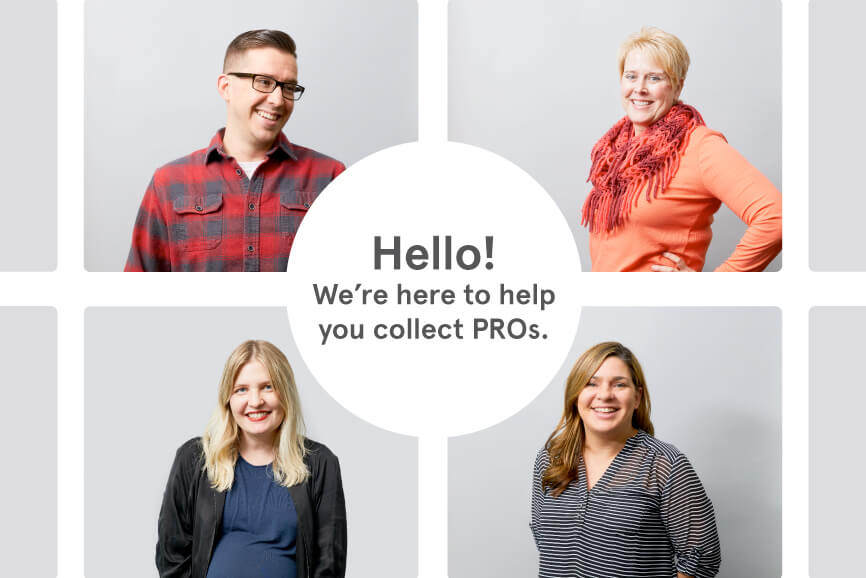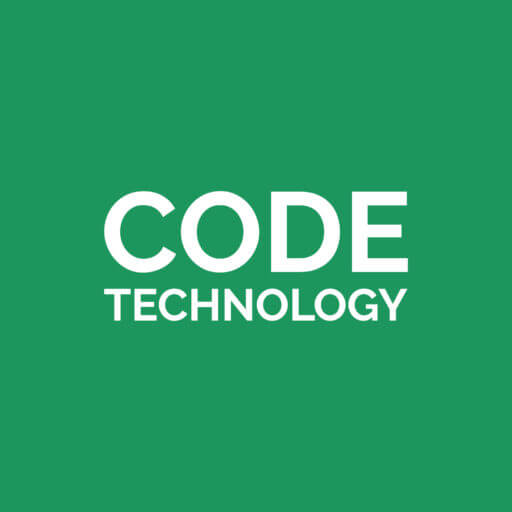CODE is Unique
Admittedly, here at CODE we had an ah-ha moment last year as it relates to our business model. We realized we do things differently than everyone else. We collect patient-reported outcome data as a service.
Collecting PROs as a service sounds simple, but we’ve realized it really challenges the status quo. Being different isn’t something we intentionally set out to do either. In fact, it’s a little embarrassing to admit we didn’t strategically differentiate ourselves; it just happened. However, once you know that our founder ran an orthopedic PRO program before starting CODE, it makes perfect sense. She experienced first hand how hard it is to collect PRO data in-clinic with internal staff, so incorporating a PRO collection service to complement an electronic platform was just the obvious solution.
Before we dive into what it means to collect PROMs as a service (and why this new model is better for the industry as a whole), let’s start off by identifying the traditional methods of collection.
As we see it, there are three traditional methods organizations are using to collect PROs
- Manually with pen & paper
- PROMs are collected in-clinic on paper or mailed and sent back. Your team might also call the patients and administer the survey to them over the phone.
- Scoring and storing of the data is usually done manually or when you enter the data into a spreadsheet.
- Your team is responsible for making sure the data is collected.
- Electronically through your EHR
- PROMs are collected in-clinic via tablet or out of clinic via email or by phone.
- Scoring and storing of the data varies by organization. Collecting PROs using your EHR requires a custom build, so no two organizations are alike, but there are some best practices. If you want to dive deeper on this, check out this article on what you need to consider when collecting PROMs via your EHR.
- Your team is responsible for making sure the data is collected.
- Electronically through a 3rd party vendor
- PROMs are collected either in-clinic via tablet or out of clinic via email, text, or phone.
- Scoring and storing of the data varies by vendor. We’ve found some vendors just collect the data, others collect and score the data but don’t store it, and some vendors do everything. If you’re looking for a vendor, and wondering how to evaluate their product, download this checklist.
- Your team is responsible for making sure the data is collected.
The common thread between each of these collection methods is, “Your team is responsible for making sure the data is collected.”
Why a new model for collecting PROs is needed
For a PRO program to be successful, it needs humans. Traditionally, those people are your staff. There are literally dozens of articles about how to set up PRO programs with your internal team, like this one in the Harvard Business Review, or this one in NEJM Catalyst. These articles are wonderful, but they don’t talk about what happens once your program is up and running and the data starts rolling in.
Anyone who has collected PROs can relate to the frustration of having an amazing pre-op capture rate and dismal results at 1 year. It’s not because you don’t care, it’s because PROMs become unmanageable very quickly.
Here’s a quick look at how a PRO program scales:
Let’s start with a busy 6-person practice. We’ll assume each surgeon does 30 procedures a month, which is the national average according to the 2016 AAOS census.
 180 pre-op surveys will be sent out every month indefinitely until there is a change in providers or the average number of procedures.
180 pre-op surveys will be sent out every month indefinitely until there is a change in providers or the average number of procedures.- At the 3 month mark, you’ll start sending out post-op surveys, on top of the pre-op surveys, so we’re looking at 360 surveys a month assuming all variables stay the same.
- Once the 1-year mark rolls around, you’ll send out the annual assessment, bringing the survey count up to 540 surveys a month.
That is a lot, but remember this is a small practice.
What happens when the practice is bigger?
- 25 provider practice is looking at 2,250+ surveys monthly once they hit the 1-year mark.
- 100 provider practice is looking at 9,000+ surveys monthly once they hit the 1-year mark.
For traditional PRO programs where internal staff is responsible for making sure the data is collected, it’s literally impossible for one person to keep up. To keep the program going, the options are:
- Hire more staff to support the program (which costs more money); or
- Expect capture rates to drop.
The list of problems with option 2 is so long we could dedicate a whole blog post about it, so we won’t go into it now.
What if PRO programs didn’t require your people to manage them? What if you could outsource the data collection and day-to-day management of your PRO program to your 3rd party vendor? It’s a new way of thinking about PRO data collection entirely and CODE (so far) is the only company offering this as part of their standard service.
CODE is a new method to collect PROs: Electronically through a 3rd party vendor as a service.

CODE collects patient-reported outcomes as a service. So what exactly does this mean?
It means: We use our team, instead of yours, to collect PROs. Everything your team does in a traditional program, we do for you. That includes enrolling patients into the program, administering and following up on the survey pre-op & post-op (via email, text message, or over the phone), and scoring, storing, and reporting your data all in one place. All we need from you is a reliable way for us to contact your patients and we do the rest.
Benefits of using a service model to collect patient-reported outcomes
Why is this new model for collecting PROs better for the industry as a whole?
- A service model solves the scale problem. In a traditional model, pre-op and post-op surveys become bottlenecks quickly. With a service model, as you add more patients to your program, you feel no change because the infrastructure and processes are designed for scale. The service takes care of everything for you.
- Consistent and high capture rates. At busy hospitals and private practices, priorities shift all the time. The person in charge of the outcomes program might move to a new role or go on medical or maternity leave. A healthy program can go from flourishing to floundering in a matter of months. Further, when PROs are tied to reimbursement, a minimum PRO capture rate is usually required to qualify for reimbursement. With a service model, you have a dedicated team whose job it is to make sure your capture rate is consistent and high. Read about how CODE calculates capture rate.
- It costs less than doing it yourself. There are a lot of expenses to consider with traditional programs. Time is by far the most expensive. This article does a good job of outlining the costs you can expect. Let us be transparent. CODE is not the cheapest PRO vendor, but we’re the only PRO vendor that provides a service too. When you account for the savings realized by not using internal resources, you’ll find CODE saves you thousands of dollars a month and does a better job collecting PROs compared to other options.
- Your team can work at the top of your license. Imagine all the good that could come from your research team using PROs instead of collecting them. CODE is the best at collecting PRO data. When you let us work at the top of our license, you get to work at the top of yours.
- No disruption to clinic flow. We constantly hear, “I want to collect PROs, but my people are already busy. I can’t add another thing to their plate.” We feel you. With a service model like CODE, all PRO collection takes place out of clinic. Along with freeing up clinic staff, it also helps ensure patients take the post-op survey because they are already conditioned to take the PRO outside of the office.
Until now, it made sense that traditional methods for collecting PRO data required your team to do all the work. We hope you’ll join us in challenging the status quo and consider letting CODE collect PROs for you as a service. Our clients, big and small – from private practice to hospital system, are seeing capture rates (80%+ pre-op and post-op) that most thought was impossible without a dedicated internal team. Join us.
Schedule A Call With a PRO Expert!
Need more help with your PRO related questions? CODE can help! Schedule a call with a CODE expert today to get you on your way to better harnessing your patient reported outcomes.



